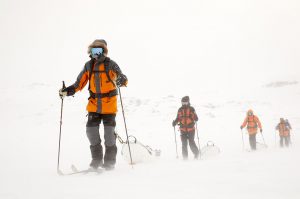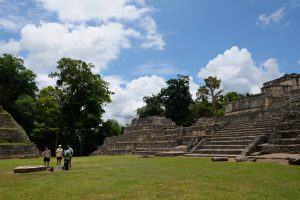
Image credit: Alamy
Amelia Duggan joins 10,000 Hindus on a moonlit procession around Mount Arunachalain Tamil Nadu, India
View online at worldwidedestinationguide.com
The sun is dipping behind the Anamalai Hills to the east as our bus joins the tail end of a sluggish cavalcade of vehicles. Leaning out of the open window into the warm Indian night, I can see that the traffic jam stretches a mile ahead. Every driver on the road seems to have his palm firmly pressed on the horn; the effect is a discordant roar of honks that my guide, Vignesh, seated next to me, manages to doze through.
It’s full moon and we’re on the road to Tiruvannamalai. Over 10,000 Hindu pilgrims will pass through the town’s gates tonight, intent on circling the nearby Mount Arunachala where — according to Hindu lore — Lord Shiva once appeared as a pillar of flame. Girivalam, as the ritual walk is known, happens at this point in every lunar cycle, drawing devotees of Shiva from across India.
When we arrive on the outskirts of the town, my resolve to do the 8-mile route barefoot (like the majority of pilgrims do) weakens: it’s dark, crowded, and the probability of stepping in a cowpat seems high. Vignesh teases me so relentlessly about my boots that I’m left with no choice but to yank them off and tread gingerly in his wake.
Tiruvannamalai is heaving and very much open for business, despite the late hour. Bright sari shops, steaming food stands, and stalls selling strings of jasmine buds and plastic children’s toys line the main road, attended by jubilant pilgrims eager for a bite to eat and a bargain. The din of haggling, laughing, and singing confounds my expectation of a solemn atmosphere.
The entire scene is carnivalesque. Street performers — gypsies, Vignesh says — have strung up tightropes, upon which costumed girls with towers of copper bowls on their heads are performing mesmerizing, angular dances. Spotting a snake charmer crouching among vipers, I quicken my step.
We follow the tide of people through winding streets, slowing in front of the conical temple of Annamalaiyar. A pilgrim to my right stops and raises his arms over his head, touching his hands together in prayer. Pilgrim after pilgrim follow suit, and I find myself bumping into people as they became momentarily frozen in worship.
Pushing on, we reach the paved road circling the base of the mountain, where loud speakers rigged to palm trees emit a soft, hypnotic refrain: om namah Shivaya. The route is lined with carts selling chickpea fritters, spiced chai, and shrines adorned with garish statues. It’s a heady mix of commerce and devotion, and the sight of a sadhu — an ascetic, draped in faded orange robes, his forehead daubed with white and yellow pigment — browsing a table of Tupperware lingers in my mind for many weeks.
Small fires burn everywhere because, here, Shiva is worshipped as his fiery incarnation Arunachaleswarar, Vignesh explains. I see people place their cupped hands over the flames before bringing their heated, blessed palms to their faces.
Dawn is breaking when we arrive back at the bus stop, exuberant despite our weary legs. Vignesh stops me and points back at the mountain. ‘Some say the mountain is really Shiva sleeping,’ he says. Suddenly I see it: the peaks resemble the outline of a giant lying on his side — head, shoulders, hips, and legs. Many hours later, when I fall asleep in my hotel, I dream that tiny people are walking around me, laughing, eating, and chanting.











